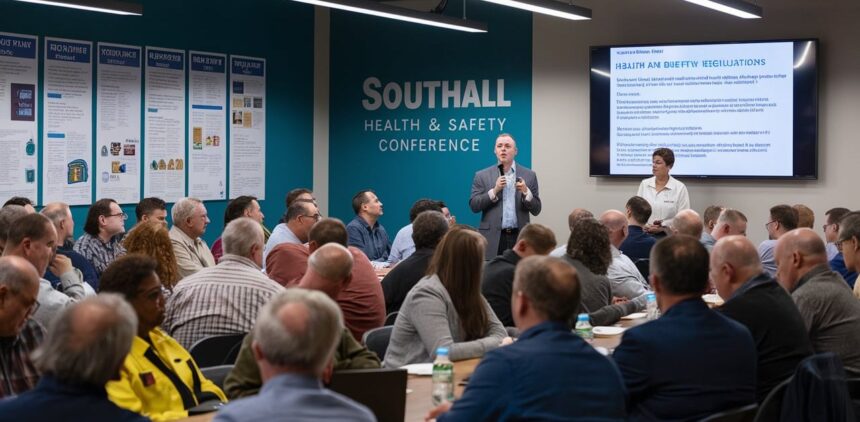Southall health and safety are paramount in ensuring the well-being of individuals and communities, particularly in bustling, diverse areas like Southall, London. Known for its vibrant cultural landscape and thriving business hubs, Southall faces unique challenges and opportunities in promoting workplace safety, public health, and community well-being.
This article delves into various aspects of health and safety in Southall, including regulations, workplace safety practices, public health initiatives, and tips for fostering a safer environment.
What is Health and Safety?
Health and safety refer to the measures, regulations, and practices designed to protect people from hazards in various environments, such as workplaces, homes, and public spaces.
Importance of Health and Safety
- Preventing Accidents and Illness: Proper measures reduce the likelihood of injuries and diseases.
- Enhancing Productivity: Safe environments contribute to efficient work and community activities.
- Legal Compliance: Adhering to regulations avoids legal consequences and fosters trust.
Southall’s Unique Health and Safety Challenges
Demographic Diversity
Southall is a melting pot of cultures, with a significant proportion of South Asian residents. This diversity necessitates culturally sensitive health and safety initiatives.
High Population Density
The area’s dense population increases the risk of:
- Workplace accidents in local industries.
- Public health issues like contagious diseases.
Economic Landscape
Southall hosts numerous small businesses, including:
- Restaurants and food businesses.
- Construction and manufacturing units.
- Retail shops and markets.
These sectors often require tailored safety protocols due to their varying risk levels.

Key Regulations Governing Health and Safety in Southall
Workplace Safety Regulations
- Health and Safety at Work Act 1974: This foundational legislation outlines employer responsibilities for creating safe work environments.
- Control of Substances Hazardous to Health (COSHH): Mandates control measures for handling hazardous materials.
- Manual Handling Operations Regulations 1992: Aims to reduce injuries from lifting or carrying heavy objects.
Food Safety and Hygiene
- Food Safety Act 1990: Ensures safe food handling and preparation in restaurants and markets.
- EU Hygiene Regulations: Applied for food import businesses in the area.
Fire Safety
- Regulatory Reform (Fire Safety) Order 2005: Requires businesses and landlords to conduct fire risk assessments.
Common Health and Safety Issues in Southall
Workplace Hazards
- Construction Sites: Risks include falls, equipment misuse, and exposure to hazardous materials.
- Restaurant Kitchens: Accidents involving burns, cuts, or slips are common.
- Marketplaces: Overcrowding can lead to trips, falls, or injuries.
Public Health Concerns
- Air Quality: Traffic congestion contributes to air pollution, affecting respiratory health.
- Waste Management: Improper disposal can attract pests and spread diseases.
Community Safety
- Crime Prevention: Ensuring the safety of residents and businesses through collaboration with local police.
- Road Safety: High pedestrian and vehicle traffic increase the risk of accidents.
Promoting Workplace Safety in Southall
Implementing Safety Policies
Employers must:
- Conduct regular risk assessments.
- Provide adequate safety training.
- Ensure proper signage and equipment.
Employee Responsibilities
Employees should:
- Report hazards promptly.
- Use personal protective equipment (PPE).
- Follow established safety protocols.
Public Health Initiatives in Southall
Air Pollution Control
- Promoting public transport and cycling.
- Monitoring pollution levels through local councils.
Waste Reduction and Recycling
- Encouraging recycling practices among residents.
- Collaborating with waste management companies.
Health Awareness Campaigns
- Hosting workshops on hygiene and disease prevention.
- Promoting vaccination drives.
Case Studies: Successful Safety Practices in Southall
Local Construction Firm
A Southall-based construction company implemented:
- Comprehensive safety training.
- Advanced fall protection equipment.
Result: Reduced workplace accidents by 40% within a year.
Community Health Initiative
A collaboration between Southall’s community centers and healthcare providers led to:
- Increased vaccination rates.
- Reduced instances of flu outbreaks.
Future Directions for Health and Safety in Southall
Embracing Technology
- Using apps for reporting hazards.
- Implementing air quality monitoring systems.
Strengthening Community Involvement
- Engaging residents in safety committees.
- Encouraging businesses to adopt eco-friendly practices.
Conclusion
Southall health and safety in Southall require a multifaceted approach that considers its unique demographic, economic, and environmental challenges. By adhering to regulations, promoting best practices, and fostering community involvement, Southall can continue to thrive as a safe and vibrant area.
Frequently Asked Questions (FAQ)
1. What are the main health and safety regulations for Southall businesses?
Southall businesses must comply with the Health and Safety at Work Act 1974, COSHH, and fire safety regulations, among others.
2. How can small businesses in Southall improve safety?
Small businesses can improve safety by conducting regular risk assessments, providing training, and ensuring compliance with food and fire safety standards.
3. What public health challenges does Southall face?
Key challenges include air pollution, waste management, and the spread of communicable diseases due to high population density.
4. Who enforces health and safety regulations in Southall?
The Health and Safety Executive (HSE) oversees workplace safety, while local councils manage public health and safety initiatives.
5. How can residents contribute to a safer Southall?
Residents can report hazards, participate in community safety programs, and adopt eco-friendly practices.
By prioritizing health and safety, Southall can build a resilient community that values well-being and prosperity.
4o



